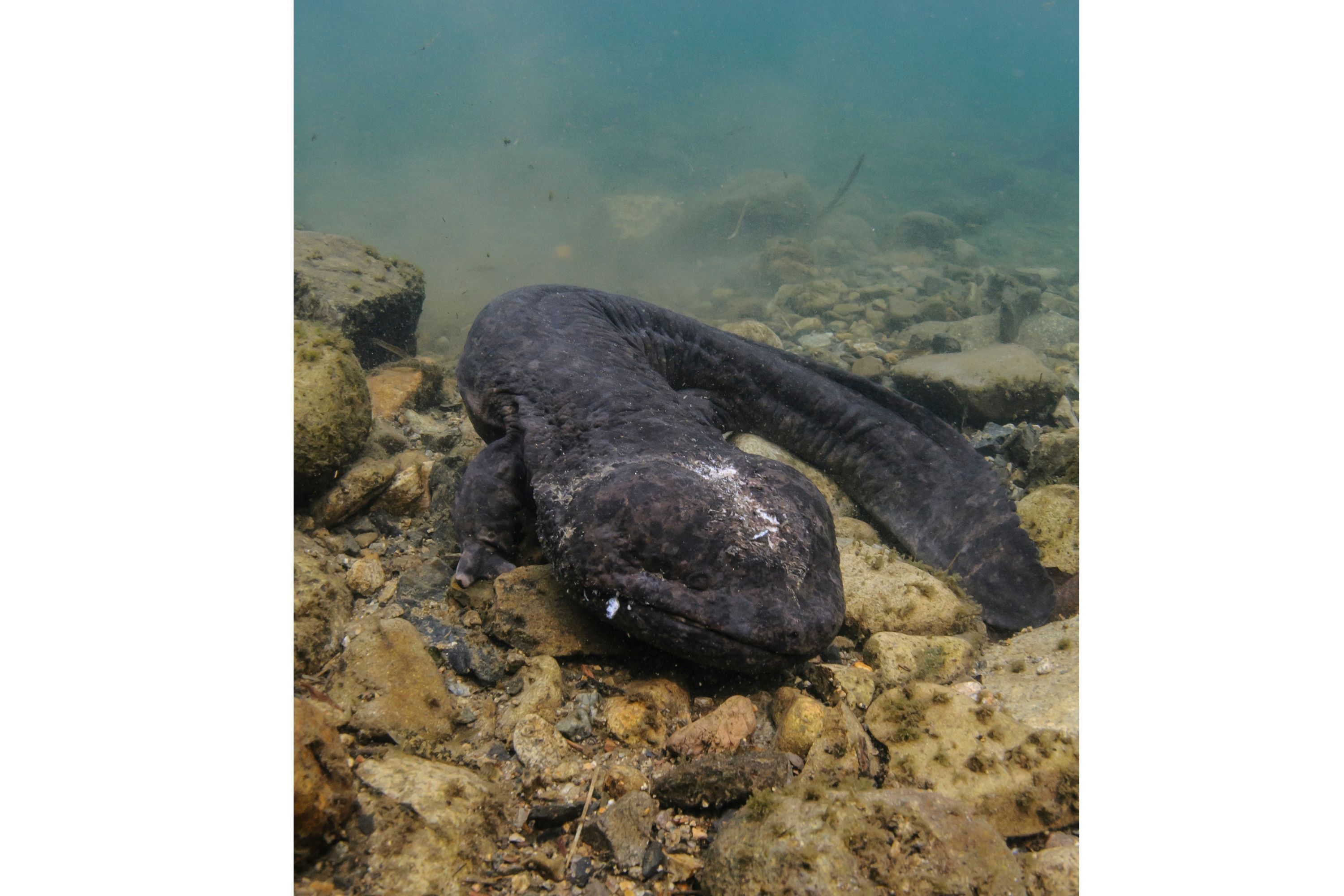Japanese giant salamander
(Andrias japonicus)

Description
The Japanese giant salamander (Andrias japonicus) is a species of salamander in the family Cryptobranchidae. This fully aquatic salamander is endemic to Japan, where it is known as Ōsanshōuo, literally meaning "giant salamander". Other local names include Hanzaki, Hanzake, and Ankou. With a length of up to 5 feet (1.5 m), it is the third-largest salamander in the world, only being surpassed by the very similar and closely related Chinese giant salamander (A. davidianus) and South China giant salamander (A. sligoi). There are currently only five known members of the family Cryptobranchidae: the Japanese, Chinese, and South China giant salamanders, an undescribed Andrias species from eastern China, and the hellbender (Cryptobranchus alleganiensis) in the eastern United States. The Japanese giant salamander was first catalogued by Europeans when the resident physician of Dejima Island in Nagasaki, Philipp Franz von Siebold, captured an individual and shipped it back to Leiden in the Netherlands, in the 1820s. The species was designated as a special natural monument in 1951, and is federally protected. The Japanese giant salamander can grow to a length of 5 feet (1.5 m) and a weight of 55 pounds (25 kg). The largest wild specimen on record weighed 58 lb (26.3 kg) and was 4.46 ft (136 cm) long. It is the third-largest amphibian in the world, only smaller than its close relatives, the South China giant salamander and the Chinese giant salamander. The brown and black mottled skin of A. japonicus provides camouflage against the bottoms of streams and rivers. Its body surface is covered with numerous small warts with distinctive warts concentrating on its head. It has very small eyes with no eyelids and poor eye sight. Its mouth extends across the width of its head, and can open to the width of its body. A. japonicus possesses large skin folds on its neck that effectively increase its overall body surface area. This assists in epidermal gas exchanges, which in turn regulates carbon dioxide and oxygen exchange with the water. Capillaries in the surface of the skin facilitate this gas exchange. The skin folds along each side of the body are more pronounced in the hellbender than in the Japanese giant salamander.
Taxonomic tree:







